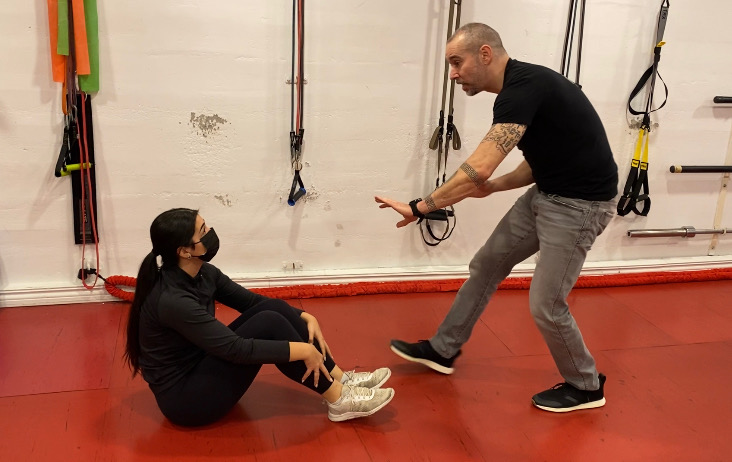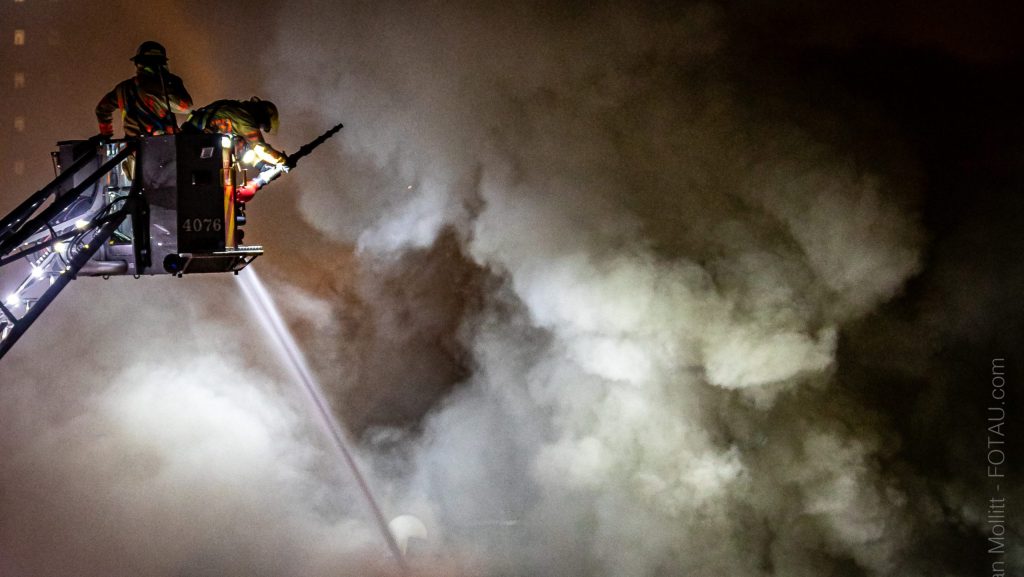Self-defence fitness coach wants to empower Quebec women, instill confidence
Posted December 19, 2021 5:39 pm.
Last Updated December 20, 2021 8:57 am.
While acknowledging there are several factors contributing to a spate of femicides in Quebec since the beginning of 2021, a Montreal self-defence expert wants to do his part by empowering women.
Exacerbated by the COVID-19 pandemic keeping people home – including during a curfew earlier this year in Quebec – an unofficial count has put the number of femicides in the province this year at 18. The vast majority were allegedly committed by a current or former intimate partner.
Self-defence fitness coach Nick Drossos wants to hopefully play a part in the solution. While recognizing the problem begins with the abuser, Drossos wants to give women the confidence to protect themselves in any situation where self-defence may be needed – and even when it isn’t.
“What we’re trying to do is heighten your chances of survival,” said Drossos. “I’ve trained women who’ve been in domestic violence, I’ve trained women who’ve been raped, and who’ve been beaten and who’ve been put in these situations. And again, it’s not as easy as them picking up their stuff and leaving.
“With self-defence, what I try to teach them is at least try to build that confidence to have that courage to eventually get up and leave.”
A report by the Table des Groupes de Femmes de Montréal confirmed there has been an increase in intimate partner violence since the start of the pandemic. The report noted that the non-profit organization SOS violence conjugale received 41,000 calls during the first year of the pandemic, an increase of 7,000 over their regular rate.
The Quebec government announced in April it was investing an additional $223 million in the fight against domestic violence in response to the high number of femicides.
The government recently passed a bill to create a specialized tribunal for cases of sexual violence and announcing a project to introduce ankle monitors for some domestic violence offenders.
Drossos wants to do his part, too.
“Just that feeling of how they’re going to carry themselves and that way of carrying themselves also deters an attacker,” he said. “So the way you carry yourself, the way you walk around, whatever happens, ‘at least I know what I have to do and I’m gonna give a fight with everything I have’ is a huge shift of mindset.
“And to me it’s one of the most rewarding things.”
Gaëlle Fedida, the political coordinator at Alliance MH2, an extended shelter for women, agrees that confidence is the key element to come out of self-defence.
“Of course it can be useful in an incident, but I think the bottom line is really for the women to gain back their power and their self esteem that they are capable,” said Fedida.
Fedida says to reach out to resources that will help.
“When you question yourself, if you are in such a situation for yourself or for your sister, your mother, your friend, your neighbour, don’t keep silent,” she said.

Self-defence fitness coach Nick Drossos teaches CityNews reporter Pamela Pagano a self-defence technique.
After confidence, Drossos says knowing the basics like reading body language and spotting a potential threat is important.
“Understanding your awareness colour code… Right now we’re in code green, that means we’re in a safe environment. Code yellow is when you walk out of here and you’re walking into your car, that means your awareness, your radar is up but it’s not full, you’re just aware of your surroundings. Code red is when you wake up in the morning, you’re walking to your car, it’s dark, you should be fully aware of everything that is happening into your space so you learn how to manage it.
“Any time you’re walking alone and you hear someone walking behind you, just take a quick glance. Scan up and down, see what your intuition tells you. If you think you’re being followed, pull a quick cross the street. Now if I’m crossing the street and I see him cross the street right away now you know he’s following you. Now he still might follow you and go parallel but at least you’ve created distance and space between you and him where you have less chance of being surprised from behind, being attacked, being choked.
“So a lot of that does come down to awareness and being pro-active and being able to be always one step ahead of your attacker.”
—With files from The Canadian Press.








